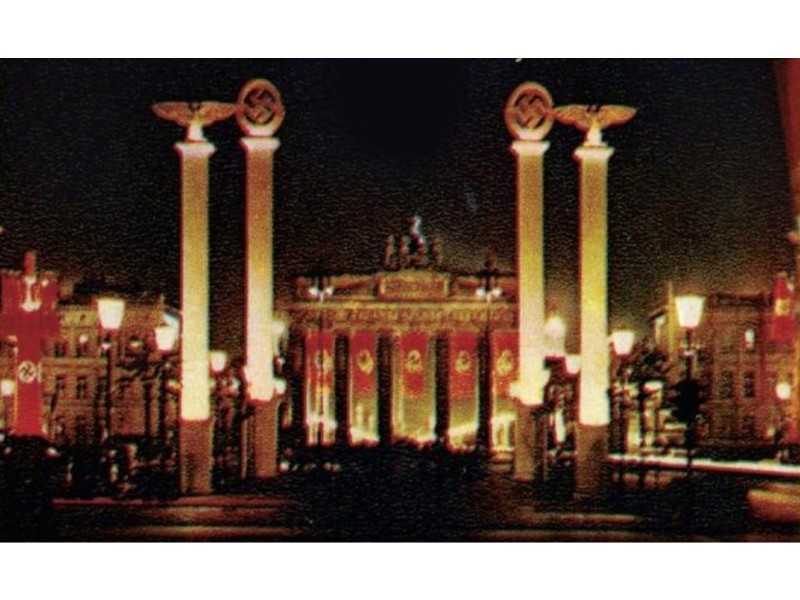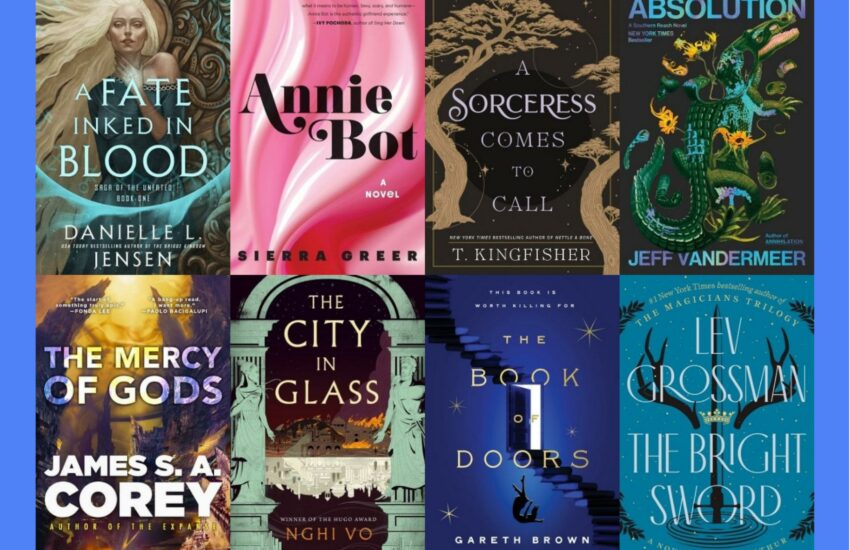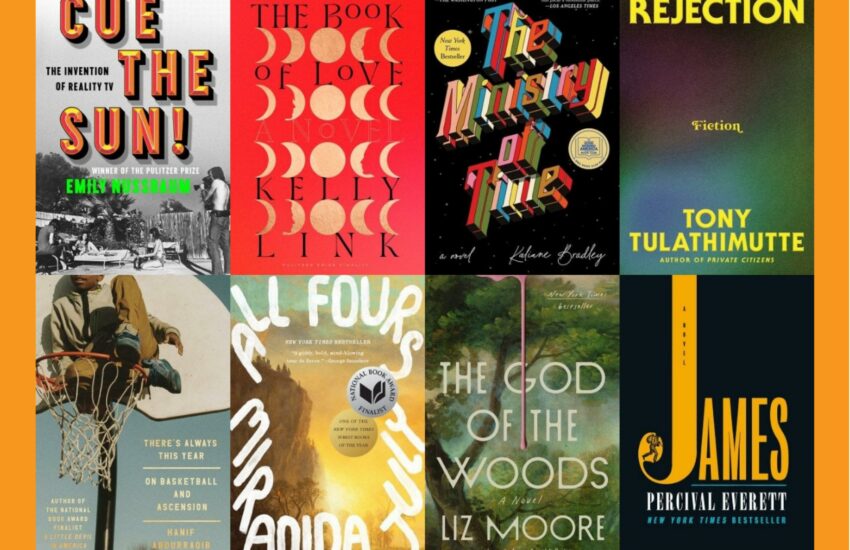The Best Books About World War 2
“What are the best books about The Second World War?” We looked at 277 of the top WW2 books, aggregating and ranking them so we could answer that very question!
The top 53 titles, all appearing on 2 or more “Best WW2” book lists, are ranked below by how many lists they appear on. The remaining 200+ titles, as well as the lists we used are in alphabetical order at the bottom of the page.
See also, The Best Books About Japan & The Pacific War During WW2!
Happy Scrolling!
Top 53 World War Two Books
53 .) A Higher Call: An Incredible True Story of Combat and Chivalry in the War-Torn Skies of World War II written by Adam Makos
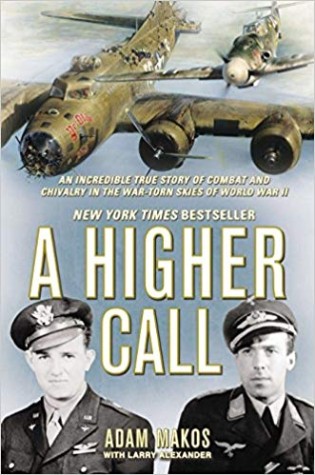
Lists It Appears On:
- Goodreads
- Wiki.Ezvid
December, 1943: A badly damaged American bomber struggles to fly over wartime Germany. At the controls is twenty-one-year-old Second Lieutenant Charlie Brown. Half his crew lay wounded or dead on this, their first mission. Suddenly, a Messerschmitt fighter pulls up on the bomber’s tail. The pilot is German ace Franz Stigler—and he can destroy the young American crew with the squeeze of a trigger…
52 .) A Train in Winter: An Extraordinary Story of Women, Friendship, and Resistance in Occupied France written by Caroline Moorehead
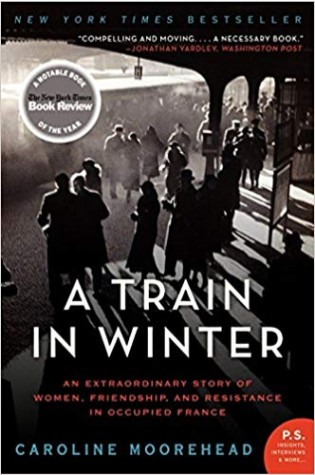
Lists It Appears On:
- Book List Reader
- Goodreads
In January 1943, 230 women of the French Resistance were sent to the death camps by the Nazis who had invaded and occupied their country. This is their story, told in full for the first time—a searing and unforgettable chronicle of terror, courage, defiance, survival, and the power of friendship. Caroline Moorehead, a distinguished biographer, human rights journalist, and the author of Dancing to the Precipice and Human Cargo, brings to life an extraordinary story that readers of Mitchell Zuckoff’s Lost in Shangri-La, Erik Larson’s In the Garden of Beasts, and Laura Hillenbrand’s Unbroken will find an essential addition to our retelling of the history of World War II—a riveting, rediscovered story of courageous women who sacrificed everything to combat the march of evil across the world.
51 .) A War To Be Won: Fighting the Second World War written by Williamson Murray and Allan R. Millett
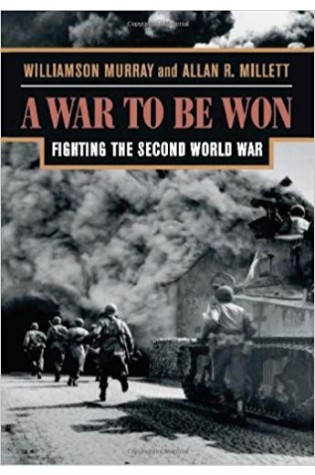
Lists It Appears On:
- About Great Books
- Goodreads
In the course of the twentieth century, no war looms as profoundly transformative or as destructive as World War II. Its global scope and human toll reveal the true face of modern, industrialized warfare. Now, for the first time, we have a comprehensive, single-volume account of how and why this global conflict evolved as it did. A War To Be Won is a unique and powerful operational history of the Second World War that tells the full story of battle on land, on sea, and in the air.
50 .) An Army at Dawn: The War in North Africa, 1942-1943 (World War II Liberation Trilogy, #1) written by Rick Atkinson
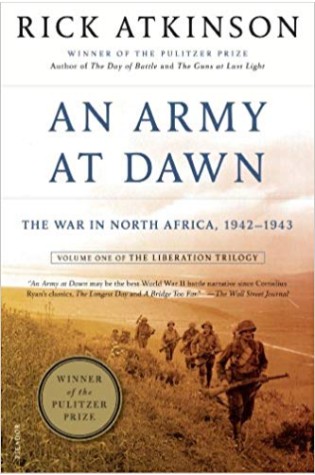
Lists It Appears On:
- Explore The Archive
- Goodreads
Opening with the daring amphibious invasion in November 1942, An Army at Dawn follows the American and British armies as they fight the French in Morocco and Algiers, and then take on the Germans and Italians in Tunisia. Battle by battle, an inexperienced and sometimes poorly led army gradually becomes a superb fighting force. At the center of the tale are the extraordinary but flawed commanders who come to dominate the battlefield: Eisenhower, Patton, Bradley, Montgomery, and Rommel.
49 .) At Dawn We Slept: The Untold Story of Pearl Harbor written by Gordon W. Prange
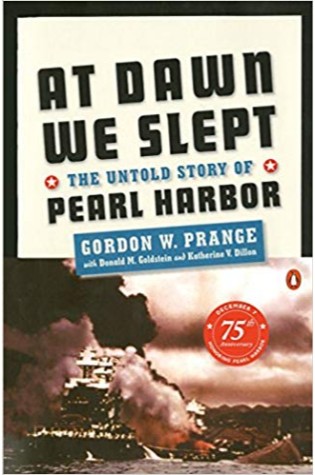
Lists It Appears On:
- Goodreads
- Pouted
At 7:53 a.m., December 7, 1941, America’s national consciousness and confidence were rocked as the first wave of Japanese warplanes took aim at the U.S. Naval fleet stationed at Pearl Harbor. As intense and absorbing as a suspense novel, At Dawn We Slept is the unparalleled and exhaustive account of the Japanese bombing of Pearl Harbor. It is widely regarded as the definitive assessment of the events surrounding one of the most daring and brilliant naval operations of all time. Through extensive research and interviews with American and Japanese leaders, Gordon W. Prange has written a remarkable historical account of the assault that-sixty years later-America cannot forget.
48 .) Carrie’s War written by Nina Bawden
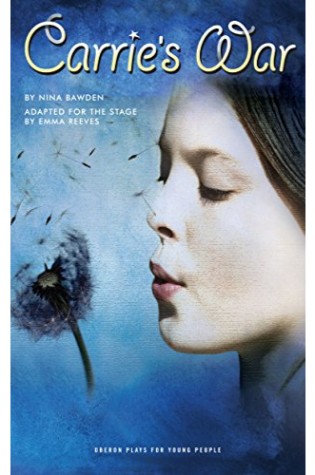
Lists It Appears On:
- Books For Topics
- The School Run
When the Second World War air raids threaten their safety in the city, Carrie and her brother Nick are evacuated to a small Welsh village. But the countryside has dangers and adventures of its own – and a group of characters who will change Carrie’s life forever. There’s mean Mr Evans, who won’t let the children eat meat; but there’s also kind Auntie Lou. There’s brilliant young Albert Sandwich, another evacuee, and Mr Johnny, who speaks a language all of his own. Then there’s Hepzibah Green, the witch at Druid’s Grove who makes perfect mince pies, and the ancient skull with its terrifying curse…For adults and young people aged eight and over.
47 .) Catch-22 written by Joseph Heller
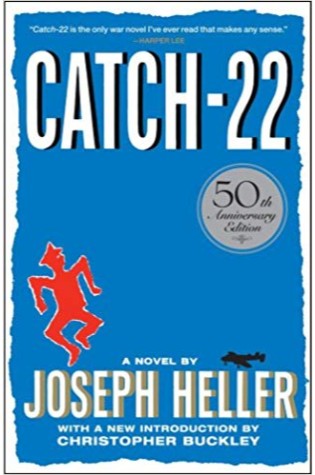
Lists It Appears On:
- Book Riot
- Goodreads
Set in Italy during World War II, this is the story of the incomparable, malingering bombardier, Yossarian, a hero who is furious because thousands of people he has never met are trying to kill him. But his real problem is not the enemy—it is his own army, which keeps increasing the number of missions the men must fly to complete their service. Yet if Yossarian makes any attempt to excuse himself from the perilous missions he’s assigned, he’ll be in violation of Catch-22, a hilariously sinister bureaucratic rule: a man is considered insane if he willingly continues to fly dangerous combat missions, but if he makes a formal request to be removed from duty, he is proven sane and therefore ineligible to be relieved.
46 .) Code Talker: The First and Only Memoir By One of the Original Navajo Code Talkers of WWII written by Chester Nez and Judith Schiess Avila
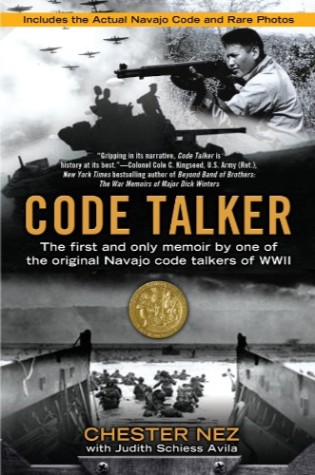
Lists It Appears On:
- Book Riot
- Wiki.Ezvid
Although more than 400 Navajos served in the military during World War II as top-secret code talkers, even those fighting shoulder to shoulder with them were not told of their covert function. And, after the war, the Navajos were forbidden to speak of their service until 1968, when the code was finally declassified. Of the original twenty-nine Navajo code talkers, Chester Nez is the only one still alive. The original twenty-nine were the men who first devised the code, then proved it indispensable in combat.
45 .) Farewell to Manzanar: A True Story of Japanese American Experience During and After the World War II Internment written by Jeanne Wakatsuki Houston
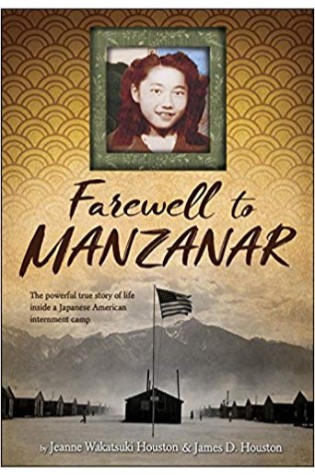
Lists It Appears On:
- Book Riot
- Goodreads
During World War II a community called Manzanar was hastily created in the high mountain desert country of California, east of the Sierras. Its purpose was to house thousands of Japanese American internees. One of the first families to arrive was the Wakatsukis, who were ordered to leave their fishing business in Long Beach and take with them only the belongings they could carry. For Jeanne Wakatsuki, a seven-year-old child, Manzanar became a way of life in which she struggled and adapted, observed and grew. For her father it was essentially the end of his life.
44 .) Flyboys: A True Story of Courage written by James D. Bradley
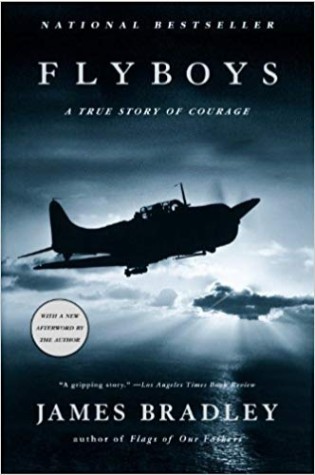
Lists It Appears On:
- About Great Books
- Goodreads
This acclaimed bestseller brilliantly illuminates a hidden piece of World War II history as it tells the harrowing true story of nine American airmen shot down in the Pacific. One of them, George H. W. Bush, was miraculously rescued. What happened to the other eight remained a secret for almost 60 years.
43 .) Helmet for My Pillow: From Parris Island to the Pacific written by Robert Leckie
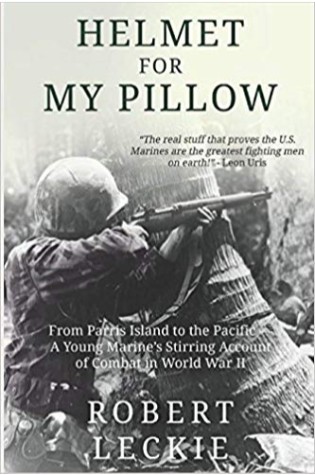
Lists It Appears On:
- About Great Books
- Goodreads
This fascinating autobiography is not simply about Leckie’s fighting life over the duration of the war as it also records the camaraderie of his fellow soldiers, the adventures that he enjoyed during his time off service in Melbourne, Australia, along with the day to day life of a normal marine.
42 .) HHhH written by Laurent Binet

Lists It Appears On:
- Book Riot
- Goodreads
Deux parachutistes tchécoslovaques envoyés par Londres sont chargés d’assassiner Reinhard Heydrich, chef de la Gestapo, chef des services secrets nazis, planificateur de la solution finale, protecteur de Bohème-Moravie, surnommé “le bourreau”, “la bête blonde”, “l’homme le plus dangereux du IIIe Reich”. Après des mois de préparation, il est finalement abattu dans sa Mercedes. Il s’ensuit une folle traque qui se termine dans une église du centre de Prague. HHhH est un acronyme inventé par les SS qui signifie en allemand : “le cerveau d’Himmler s’appelle Heydrich” (Himmlers Hirn heisst Heydrich). L’essentiel de l’histoire se situe entre 1938 et 1942. Le récit est structuré comme un entonnoir : des chapitres courts relatent différents épisodes en divers lieux et à diverses époques, qui tous convergent vers Prague où s’est déroulé l’attentat. Tous les personnages de ce livre ont réellement existé ou existent encore. L’auteur a rapporté les faits le plus fidèlement possible mais a dû résister à la tentation de romancer. Comment raconter l’Histoire ? Cette question conduit parfois l’auteur à se mettre en scène pour rendre compte de ses conditions d’écriture, de ses recherches, de ses hésitations. La vérité historique se révèle à la fois une obsession névrotique et une quête sans fin. Laurent Binet a 37 ans. Il est né à Paris. Il a effectué son service militaire en Slovaquie et a partagé son temps entre Paris et Prague pendant plusieurs années. Agrégé de lettres, il est professeur de français en Seine-Saint-Denis depuis dix ans et chargé de cours à l’Université.
41 .) Hitler written by Ian Kershaw
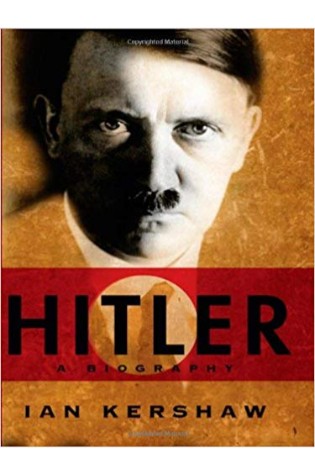
Lists It Appears On:
- About Great Books
- Five Books
Ian Kershaw’s Hitler is a one-volume masterpiece that will become the standard work. From Hitler’s origins as a failed artist in fin-de-siecle Vienna to the terrifying last days in his Berlin bunker, Kershaw’s richly illustrated biography is a mesmerizing portrait of how Hitler attained, exercised, and retained power. Drawing on previously untapped sources, such as Goebbels’s diaries, Kershaw addresses the crucial questions about the unique nature of Nazi radicalism, about the Holocaust, and about the poisoned European world that allowed Hitler to operate so effectively.
40 .) Irena’s Children: The Extraordinary Story of the Woman Who Saved 2,500 Children from the Warsaw Ghetto written by Tilar J. Mazzeo
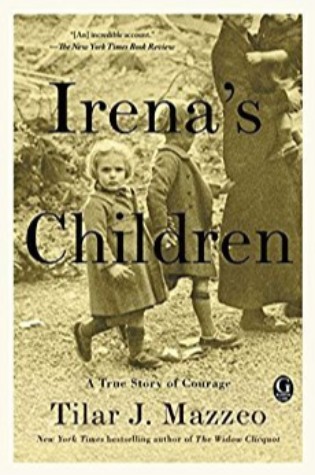
Lists It Appears On:
- Book Riot
- Intentional Home Schooling
A New York Post Best Book of 2016 One of Kirkus Reviews’ Ten Most Anticipated Nonfiction Books of Fall 2016 From the New York Times bestselling author of The Widow Clicquot comes an extraordinary and gripping account of Irena Sendler—the “female Oskar Schindler”—who took staggering risks to save 2,500 children from death and deportation in Nazi-occupied Poland during World War II. In 1942, one young social worker, Irena Sendler, was granted access to the Warsaw ghetto as a public health specialist. While there, she reached out to the trapped Jewish families, going from door to door and asking the parents to trust her with their young children. She started smuggling them out of the walled district, convincing her friends and neighbors to hide them. Driven to extreme measures and with the help of a network of local tradesmen, ghetto residents, and her star-crossed lover in the Jewish resistance, Irena ultimately smuggled thousands of children past the Nazis. She made dangerous trips through the city’s sewers, hid children in coffins, snuck them under overcoats at checkpoints, and slipped them through secret passages in abandoned buildings. But Irena did something even more astonishing at immense personal risk: she kept secret lists buried in bottles under an old apple tree in a friend’s back garden. On them were the names and true identities of those Jewish children, recorded with the hope that their relatives could find them after the war. She could not have known that more than ninety percent of their families would perish. In Irena’s Children, Tilar Mazzeo tells the incredible story of this courageous and brave woman who risked her life to save innocent children from the Holocaust—a truly heroic tale of survival, resilience, and redemption.
39 .) Leningrad written by Anna Reid
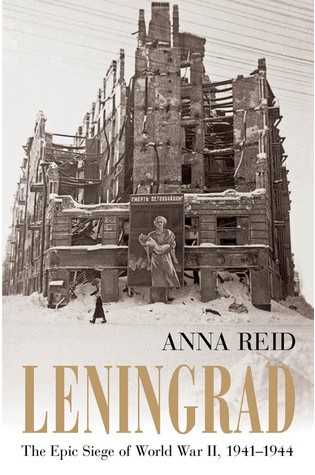
Lists It Appears On:
- About Great Books
- Five Books
On September 8, 1941, eleven weeks after Hitler launched Operation Barbarossa, his brutal surprise attack on the Soviet Union, Leningrad was surrounded. The siege was not lifted for two and a half years, by which time some three quarters of a million Leningraders had died of starvation. Anna Reid’s Leningrad is a gripping, authoritative narrative history of this dramatic moment in the twentieth century, interwoven with indelible personal accounts of daily siege life drawn from diarists on both sides. They reveal the Nazis’ deliberate decision to starve Leningrad into surrender and Hitler’s messianic miscalculation, the incompetence and cruelty of the Soviet war leadership, the horrors experienced by soldiers on the front lines, and, above all, the terrible details of life in the blockaded city: the relentless search for food and water; the withering of emotions and family ties; looting, murder, and cannibalism- and at the same time, extraordinary bravery and self-sacrifice. Stripping away decades of Soviet propaganda, and drawing on newly available diaries and government records, Leningrad also tackles a raft of unanswered questions: Was the size of the death toll as much the fault of Stalin as of Hitler? Why didn’t the Germans capture the city? Why didn’t it collapse into anarchy? What decided who lived and who died? Impressive in its originality and literary style, Leningrad gives voice to the dead and will rival Anthony Beevor’s classic Stalingrad in its impact.
38 .) Letters From The Lighthouse written by Emma Carroll
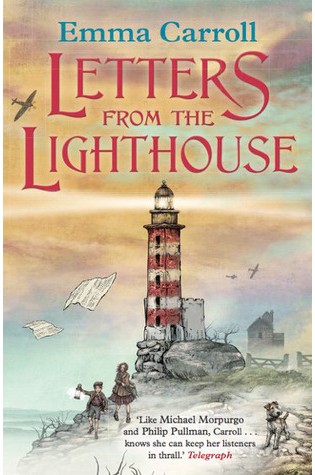
Lists It Appears On:
- Books For Topics
- The School Run
February, 1941. After months of bombing raids in London, twelve-year-old Olive Bradshaw and her little brother Cliff are evacuated to the Devon coast. The only person with two spare beds is Mr Ephraim, the local lighthouse keeper. But he’s not used to company and he certainly doesn’t want any evacuees. Desperate to be helpful, Olive becomes his post-girl, carrying secret messages (as she likes to think of the letters) to the villagers. But Olive has a secret of her own. Her older sister Sukie went missing in an air raid, and she’s desperate to discover what happened to her. And then she finds a strange coded note which seems to link Sukie to Devon, and to something dark and impossibly dangerous.
37 .) Life After Life (Todd Family, #1) written by Kate Atkinson
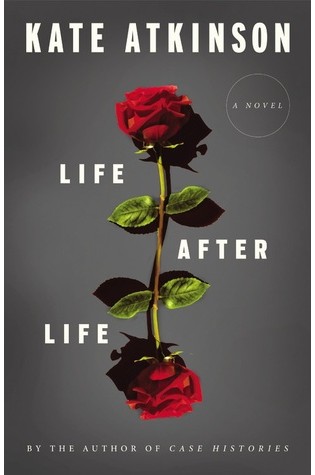
Lists It Appears On:
- Book Riot
- Goodreads
What if you could live again and again, until you got it right? On a cold and snowy night in 1910, Ursula Todd is born to an English banker and his wife. She dies before she can draw her first breath. On that same cold and snowy night, Ursula Todd is born, lets out a lusty wail, and embarks upon a life that will be, to say the least, unusual. For as she grows, she also dies, repeatedly, in a variety of ways, while the young century marches on towards its second cataclysmic world war. Does Ursula’s apparently infinite number of lives give her the power to save the world from its inevitable destiny? And if she can – will she?
36 .) Life and Fate written by Vasily Grossman
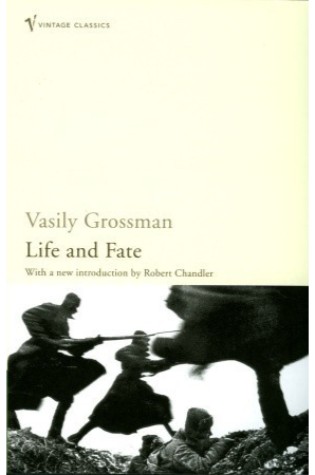
Lists It Appears On:
- Book Riot
- Five Books
Life and Fate is an epic tale of a country told through the fate of a single family, the Shaposhnikovs. As the battle of Stalingrad looms, Grossman’s characters must work out their destinies in a world torn apart by ideological tyranny and war. Completed in 1960 and then confiscated by the KGB, this sweeping panorama of Soviet society remained unpublished until it was smuggled into the West in 1980, where it was hailed as a masterpiece.
35 .) Maus I: A Survivor’s Tale written by Art Spiegelman
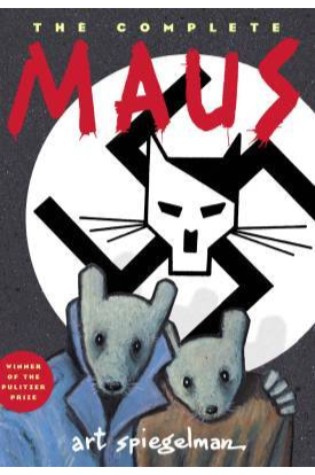
Lists It Appears On:
- Book Riot
- Explore The Archive
Combined for the first time here are Maus I: A Survivor’s Tale and Maus II – the complete story of Vladek Spiegelman and his wife, living and surviving in Hitler’s Europe. By addressing the horror of the Holocaust through cartoons, the author captures the everyday reality of fear and is able to explore the guilt, relief and extraordinary sensation of survival – and how the children of survivors are in their own way affected by the trials of their parents. A contemporary classic of immeasurable significance.
34 .) Neptune’s Inferno: The U.S. Navy at Guadalcanal written by James D. Hornfischer
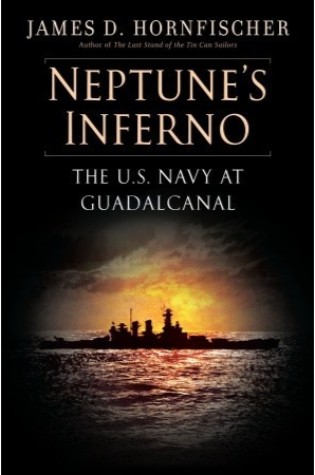
Lists It Appears On:
- About Great Books
- Goodreads
With The Last Stand of the Tin Can Sailors and Ship of Ghosts, James D. Hornfischer created essential and enduring narratives about America’s World War II Navy, works of unique immediacy distinguished by rich portraits of ordinary men in extremis and exclusive new information. Now he does the same for the deadliest, most pivotal naval campaign of the Pacific war: Guadalcanal. Neptune’s Inferno is at once the most epic and the most intimate account ever written of the contest for control of the seaways of the Solomon Islands, America’s first concerted offensive against the Imperial Japanese juggernaut and the true turning point of the Pacific conflict. This grim, protracted campaign has long been heralded as a Marine victory. Now, with his powerful portrait of the Navy’s sacrifice—three sailors died at sea for every man lost ashore—Hornfischer tells for the first time the full story of the men who fought in destroyers, cruisers, and battleships in the narrow, deadly waters of “Ironbottom Sound.” Here, in brilliant cinematic detail, are the seven major naval actions that began in August of 1942, a time when the war seemed unwinnable and America fought on a shoestring, with the outcome always in doubt. But at Guadalcanal the U.S. proved it had the implacable will to match the Imperial war machine blow for violent blow. Working from new interviews with survivors, unpublished eyewitness accounts, and newly available documents, Hornfischer paints a vivid picture of the officers and enlisted men who took on the Japanese in America’s hour of need: Vice Admiral William “Bull” Halsey, who took command of the faltering South Pacific Area from his aloof, overwhelmed predecessor and became a national hero; the brilliant Rear Admiral Norman Scott, who died even as he showed his command how to fight and win; Rear Admiral Daniel Callaghan, the folksy and genteel “Uncle Dan,” lost in the strobe-lit chaos of his burning flagship; Rear Admiral Willis Lee, who took vengeance two nights later in a legendary showdown with the Japanese battleship Kirishima; the five Sullivan brothers, all killed in the shocking destruction of the Juneau; and many others, all vividly brought to life.
33 .) Number the Stars written by Lois Lowry
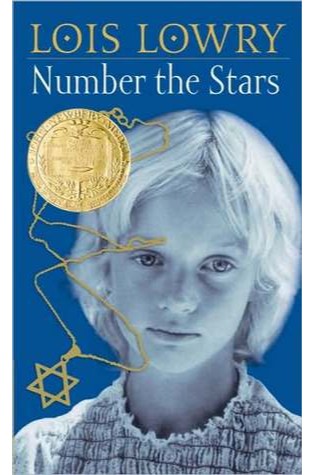
Lists It Appears On:
- Book Riot
- Intentional Home Schooling
Ten-year-old Annemarie Johansen and her best friend Ellen Rosen often think of life before the war. It’s now 1943 and their life in Copenhagen is filled with school, food shortages, and the Nazi soldiers marching through town. When the Jews of Denmark are “relocated,” Ellen moves in with the Johansens and pretends to be one of the family. Soon Annemarie is asked to go on a dangerous mission to save Ellen’s life.
32 .) Schindler’s List written by Thomas Keneally

Lists It Appears On:
- Book Riot
- Goodreads
In the shadow of Auschwitz, a flamboyant German industrialist grew into a living legend to the Jews of Cracow. He was a womaniser, a heavy drinker and a bon viveur, but to them he became a saviour. This is the extraordinary story of Oskar Schindler, who risked his life to protect Jews in Nazi-occupied Poland and who was transformed by the war into a man with a mission, a compassionate angel of mercy.
31 .) Sophie’s Choice written by William Styron

Lists It Appears On:
- Book List Reader
- Book Riot
Three stories are told: a young Southerner wants to become a writer; a turbulent love-hate affair between a brilliant Jew and a beautiful Polish woman; and of an awful wound in that woman’s past–one that impels both Sophie and Nathan toward destruction.
30 .) Stalingrad written by Antony Beevor
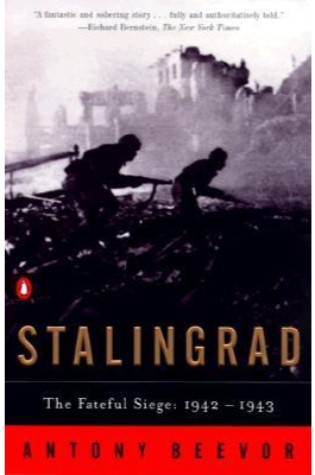
Lists It Appears On:
- About Great Books
- Explore The Archive
The Battle of Stalingrad was not only the psychological turning point of World War II: it also changed the face of modern warfare. Historians and reviewers worldwide have hailed Antony Beevor’s magisterial Stalingrad as the definitive account of World War II’s most harrowing battle. In August 1942, Hitler’s huge Sixth Army reached the city that bore Stalin’s name. In the five-month siege that followed, the Russians fought to hold Stalingrad at any cost; then, in an astonishing reversal, encircled and trapped their Nazi enemy. This battle for the ruins of a city cost more than a million lives. Stalingrad conveys the experience of soldiers on both sides, fighting in inhuman conditions, and of civilians trapped on an urban battlefield. Antony Beevor has interviewed survivors and discovered completely new material in a wide range of German and Soviet archives, including prisoner interrogations and reports of desertions and executions. As a story of cruelty, courage, and human suffering, Stalingrad is unprecedented and unforgettable.
29 .) Suite Francaise written by Irène Némirovsky
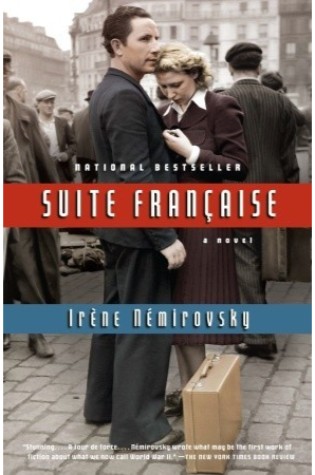
Lists It Appears On:
- Book List Reader
- Book Riot
The first two stories of a masterwork once thought lost, written by a pre-WWII bestselling author who was deported to Auschwitz and died before her work could be completed. By the early l940s, when Ukrainian-born Irène Némirovsky began working on what would become Suite Française—the first two parts of a planned five-part novel—she was already a highly successful writer living in Paris. But she was also a Jew, and in 1942 she was arrested and deported to Auschwitz: a month later she was dead at the age of thirty-nine. Two years earlier, living in a small village in central France—where she, her husband, and their two small daughters had fled in a vain attempt to elude the Nazis—she’d begun her novel, a luminous portrayal of a human drama in which she herself would become a victim. When she was arrested, she had completed two parts of the epic, the handwritten manuscripts of which were hidden in a suitcase that her daughters would take with them into hiding and eventually into freedom. Sixty-four years later, at long last, we can read Némirovsky’s literary masterpiece The first part, “A Storm in June,” opens in the chaos of the massive 1940 exodus from Paris on the eve of the Nazi invasion during which several families and individuals are thrown together under circumstances beyond their control. They share nothing but the harsh demands of survival—some trying to maintain lives of privilege, others struggling simply to preserve their lives—but soon, all together, they will be forced to face the awful exigencies of physical and emotional displacement, and the annihilation of the world they know. In the second part, “Dolce,” we enter the increasingly complex life of a German-occupied provincial village. Coexisting uneasily with the soldiers billeted among them, the villagers—from aristocrats to shopkeepers to peasants—cope as best they can. Some choose resistance, others collaboration, and as their community is transformed by these acts, the lives of these these men and women reveal nothing less than the very essence of humanity. Suite Française is a singularly piercing evocation—at once subtle and severe, deeply compassionate, and fiercely ironic—of life and death in occupied France, and a brilliant, profoundly moving work of art.
28 .) The Book Thief written by Markus Zuzak
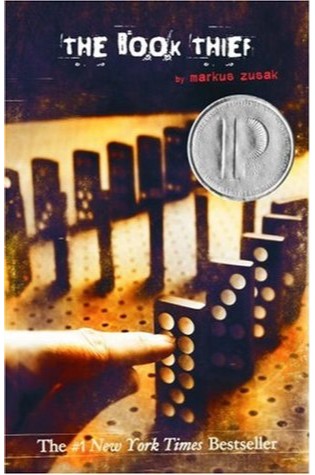
Lists It Appears On:
- Book Riot
- Intentional Home Schooling
It is 1939. Nazi Germany. The country is holding its breath. Death has never been busier, and will be busier still. By her brother’s graveside, Liesel’s life is changed when she picks up a single object, partially hidden in the snow. It is The Gravedigger’s Handbook, left behind there by accident, and it is her first act of book thievery. So begins a love affair with books and words, as Liesel, with the help of her accordian-playing foster father, learns to read. Soon she is stealing books from Nazi book-burnings, the mayor’s wife’s library, wherever there are books to be found. But these are dangerous times. When Liesel’s foster family hides a Jew in their basement, Liesel’s world is both opened up, and closed down. In superbly crafted writing that burns with intensity, award-winning author Markus Zusak has given us one of the most enduring stories of our time.
27 .) The Boy in the Striped Pajamas written by John Boyne
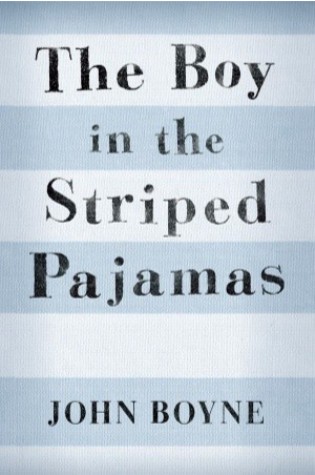
Lists It Appears On:
- Book Riot
- Intentional Home Schooling
Berlin 1942 When Bruno returns home from school one day, he discovers that his belongings are being packed in crates. His father has received a promotion and the family must move from their home to a new house far far away, where there is no one to play with and nothing to do. A tall fence running alongside stretches as far as the eye can see and cuts him off from the strange people he can see in the distance. But Bruno longs to be an explorer and decides that there must be more to this desolate new place than meets the eye. While exploring his new environment, he meets another boy whose life and circumstances are very different to his own, and their meeting results in a friendship that has devastating consequences.
26 .) The Emergency Zoo written by Miriam Halahmy
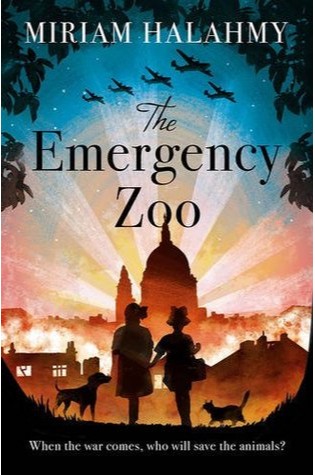
Lists It Appears On:
- Books For Topics
- The School Run
When the war comes, who will save the animals? It is late August 1939: Britain is on the brink of war, and preparations are under way to evacuate London’s children to the countryside. When twelve-year-old Tilly and her best friend Rosy find out that they will not be able to take their beloved dog and cat with them – and that, even worse, their pets will, along with countless other animals, be taken to the vet to be put down – they decide to take action. The two girls come up with the idea of hiding them in a derelict hut in the woods and, when other children find out and start bringing their rabbits, guinea pigs and hamsters, their secret den turns into an emergency zoo. Inspired by real events during the Second World War, Miriam Halahmy’s novel is a touching tale of courage, resourcefulness and camaraderie in desperate times, as well as a stirring defence of animal welfare.
25 .) The Girls of Atomic City: The Untold Story of the Women Who Helped Win World War II written by Denise Kiernan
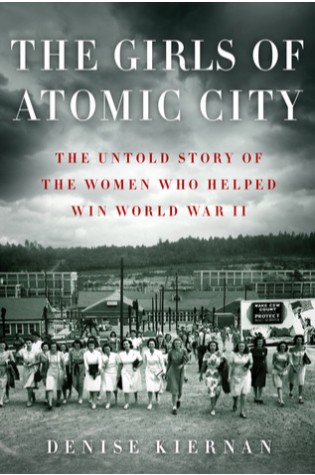
Lists It Appears On:
- Book Riot
- Goodreads
The incredible story of the young women of Oak Ridge, Tennessee, who unwittingly played a crucial role in one of the most significant moments in U.S. history. The Tennessee town of Oak Ridge was created from scratch in 1942. One of the Manhattan Project’s secret cities, it didn’t appear on any maps until 1949, and yet at the height of World War II it was using more electricity than New York City and was home to more than 75,000 people, many of them young women recruited from small towns across the South. Their jobs were shrouded in mystery, but they were buoyed by a sense of shared purpose, close friendships—and a surplus of handsome scientists and Army men!But against this vibrant wartime backdrop, a darker story was unfolding. The penalty for talking about their work—even the most innocuous details—was job loss and eviction. One woman was recruited to spy on her coworkers. They all knew something big was happening at Oak Ridge, but few could piece together the true nature of their work until the bomb “Little Boy” was dropped over Hiroshima, Japan, and the secret was out. The shocking revelation: the residents of Oak Ridge were enriching uranium for the atomic bomb.Though the young women originally believed they would leave Oak Ridge after the war, many met husbands there, made lifelong friends, and still call the seventy-year-old town home. The reverberations from their work there—work they didn’t fully understand at the time—are still being felt today. In The Girls of Atomic City, Denise Kiernan traces the astonishing story of these unsung WWII workers through interviews with dozens of surviving women and other Oak Ridge residents. Like The Immortal Life of Henrietta Lacks, this is history and science made fresh and vibrant—a beautifully told, deeply researched story that unfolds in a suspenseful and exciting way.
24 .) The Liberator: One World War II Soldier’s 500-Day Odyssey from the Beaches of Sicily to the Gates of Dachau written by Alex Kershaw
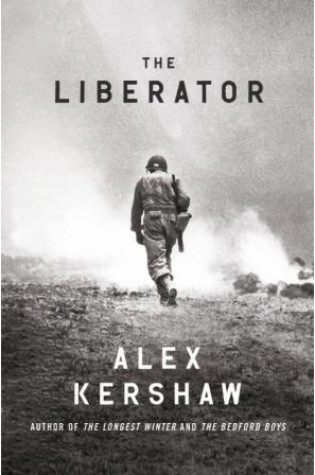
Lists It Appears On:
- Goodreads
- Wiki.Ezvid
The riveting true story of the bloodiest and most dramatic march to victory of the Second World War, following the battlefield odyssey of a maverick U.S. Army officer and his infantry unit as they fought from the invasion of Italy to the liberation of Dachau at war’s end.From July 10, 1943, the date of the Allied landing in Sicily, to May 8, 1945, when victory in Europe was declared-roughly 500 days-no regiment saw more action, and no single platoon, company, or battalion endured worse, than the one commanded by Felix Sparks, a greenhorn second lieutenant when The Liberator begins. Historian Alex Kershaw vividly portrays the immense courage and stamina of Sparks and his men as they fought terrifying engagements against Hitler’s finest troops in Sicily and Salerno and as they endured attack after attack on the beaches of Anzio (with Sparks miraculously emerging as his 200-man company’s sole survivor). In the bloody battle for southern France, Sparks led his reconstituted unit into action against superbly equipped and trained die-hard SS troops and demonstrated how the difference between defeat and victory would be a matter of character, not tactics or hardware. Finally, he and his men were ordered to liberate Dachau, the Nazis’ first concentration camp. It would be their greatest challenge, a soul-searing test of their humanity.
23 .) The Lion and The Unicorn written by Shirley Hughes
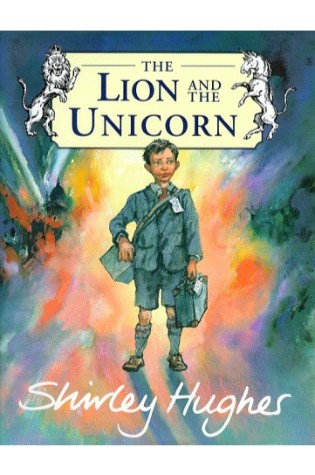
Lists It Appears On:
- Books For Topics
- The School Run
When Lenny Levi’s father goes off to fight in the Second World War, his son has to learn to be brave: brave when bombs are dropped on his street in London, brave when he’s evacuated to a big house in the country, and brave when spiteful children tease him and call him names.This beautiful book will strike a chord with anyone who has ever felt homesick and alone. Full of detail and character, it embraces the past and the present with unique poignancy and power.
22 .) The Longest Winter: The Battle of the Bulge and the Epic Story of World War II’s Most Decorated Platoon written by Alex Kershaw
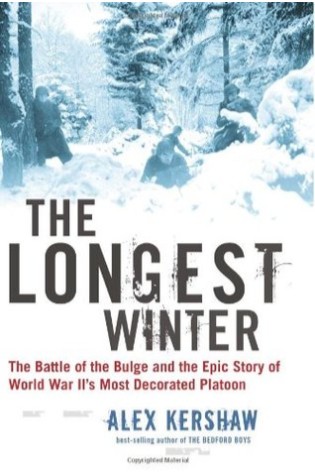
Lists It Appears On:
- Goodreads
- Wiki.Ezvid
On a cold morning in December, 1944, deep in the Ardennes forest, a platoon of eighteen men under the command of twenty-year-old lieutenant Lyle Bouck were huddled in their foxholes trying desperately to keep warm. Suddenly, the early morning silence was broken by the roar of a huge artillery bombardment and the dreadful sound of approaching tanks. Hitler had launched his bold and risky offensive against the Allies-his “last gamble”-and the small American platoon was facing the main thrust of the entire German assault. Vastly outnumbered, they repulsed three German assaults in a fierce day-long battle, killing over five hundred German soldiers and defending a strategically vital hill. Only when Bouck’s men had run out of ammunition did they surrender to the enemy.As POWs, Bouck’s platoon began an ordeal far worse than combat-survive in captivity under trigger-happy German guards, Allied bombing raids, and a daily ration of only thin soup. In German POW camps, hundreds of captured Americans were either killed or died of disease, and most lost all hope. But the men of Bouck’s platoon survived-miraculously, all of them.Once again in vivid, dramatic prose, Alex Kershaw brings to life the story of some of America’s little-known heroes-the story of America’s most decorated small unit, an epic story of courage and survival in World War II, and one of the most inspiring stories in American history.
21 .) The Making of the Atomic Bomb written by Richard Rhodes
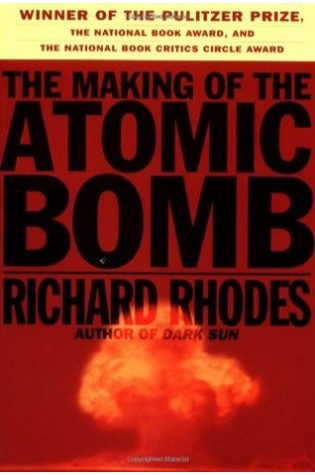
Lists It Appears On:
- Goodreads
- Pouted
Here for the first time, in rich, human, political, and scientific detail, is the complete story of how the bomb was developed, from the turn-of-the-century discovery of the vast energy locked inside the atom to the dropping of the first bombs on Japan. Few great discoveries have evolved so swiftly — or have been so misunderstood. From the theoretical discussions of nuclear energy to the bright glare of Trinity there was a span of hardly more than twenty-five years. What began as merely an interesting speculative problem in physics grew into the Manhattan Project, and then into the Bomb with frightening rapidity, while scientists known only to their peers — Szilard, Teller, Oppenheimer, Bohr, Meitner, Fermi, Lawrence, and yon Neumann — stepped from their ivory towers into the limelight. Richard Rhodes takes us on that journey step by step, minute by minute, and gives us the definitive story of man’s most awesome discovery and invention.
20 .) The Narrow Road to the Deep North written by Richard Flanagan
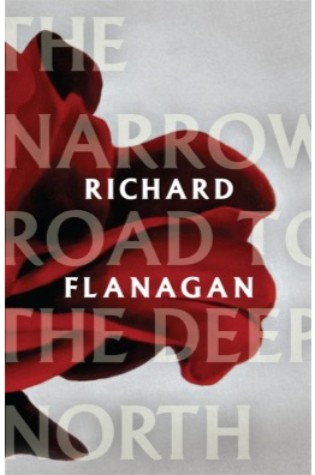
Lists It Appears On:
- Book List Reader
- Book Riot
A novel of the cruelty of war, and tenuousness of life and the impossibility of love. Richard Flanagan’s story — of Dorrigo Evans, an Australian doctor haunted by a love affair with his uncle’s wife — journeys from the caves of Tasmanian trappers in the early twentieth century to a crumbling pre-war beachside hotel, from a Thai jungle prison to a Japanese snow festival, from the Changi gallows to a chance meeting of lovers on the Sydney Harbour Bridge. Taking its title from 17th-century haiku poet Basho’s travel journal, The Narrow Road to the Deep North is about the impossibility of love. At its heart is one day in a Japanese slave labour camp in August 1943. As the day builds to its horrific climax, Dorrigo Evans battles and fails in his quest to save the lives of his fellow POWs, a man is killed for no reason, and a love story unfolds.
19 .) The Rape of Nanking written by Iris Chang
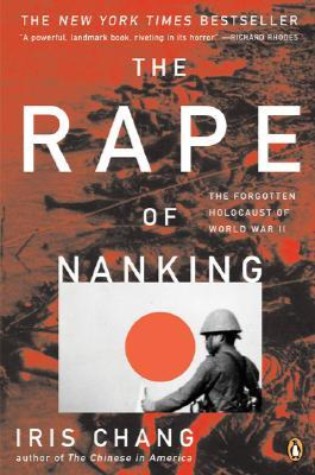
Lists It Appears On:
- Book Riot
- Goodreads
In December 1937, the Japanese army invaded the ancient city of Nanking, systematically raping, torturing, and murdering more than 300,000 Chinese civilians. This book tells the story from three perspectives: of the Japanese soldiers who performed it, of the Chinese civilians who endured it, and of a group of Europeans and Americans who refused to abandon the city and were able to create a safety zone that saved many.
18 .) The Rising Sun: The Decline & Fall of the Japanese Empire, 1936-45 written by John Willard Toland
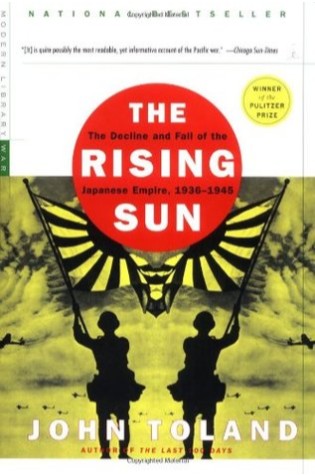
Lists It Appears On:
- Book Riot
- Goodreads
This Pulitzer Prize–winning history of World War II chronicles the dramatic rise and fall of the Japanese empire, from the invasion of Manchuria and China to the atomic bombing of Hiroshima and Nagasaki. Told from the Japanese perspective, The Rising Sun is, in the author’s words, “a factual saga of people caught up in the flood of the most overwhelming war of mankind, told as it happened—muddled, ennobling, disgraceful, frustrating, full of paradox.” In weaving together the historical facts and human drama leading up to and culminating in the war in the Pacific, Toland crafts a riveting and unbiased narrative history. In his Foreword, Toland says that if we are to draw any conclusion from The Rising Sun, it is “that there are no simple lessons in history, that it is human nature that repeats itself, not history.”
17 .) The Storm of War: A New History of the Second World War written by Andrew Roberts
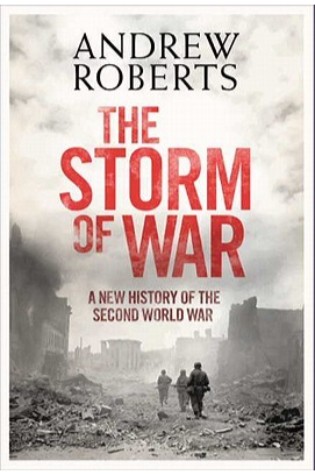
Lists It Appears On:
- About Great Books
- Goodreads
From “Britain’s finest military historian” (The Economist) comes a magisterial new history of World War II and the flawed axis strategy that led to their defeat. The Second World War lasted for 2,174 days, cost $1.5 trillion, and claimed the lives of more than 50 million people. What were the factors that affected the war’s outcome? Why did the Axis lose? And could they, with a different strategy, have won? Andrew Roberts’s acclaimed new history has been hailed as the finest single-volume account of this epic conflict. From the western front to North Africa, from the Baltic to the Far East, he tells the story of the war—the grand strategy and the individual experience, the cruelty and the heroism—as never before. In researching this magnificently vivid history, Roberts walked many of the key battlefields and wartime sites in Russia, France, Italy, Germany, and the Far East, and drew on a number of never-before-published documents, such as a letter from Hitler’s director of military operations explaining the reasoning behind the FÃœhrer’s order to halt the Panzers outside Dunkirk—a delay that enabled British forces to evacuate. Roberts illuminates the principal actors on both sides and analyzes how they reached critical decisions. He also presents the tales of many little-known individuals whose experiences form a panoply of the extraordinary courage and self-sacrifice, as well as the terrible depravity and cruelty, of the Second World War. Meticulously researched and masterfully written, The Storm of War gives a dramatic account of this momentous event and shows in remarkable detail why the war took the course it did.
16 .) When Hitler Stole Pink Rabbit written by Judith Kerr
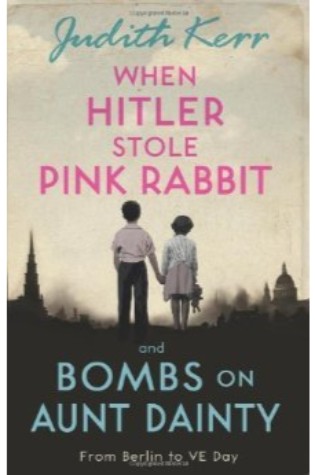
Lists It Appears On:
- Intentional Home Schooling
- The School Run
Nine-year-old Anna was too busy with schoolwork and friends in 1933 to take much notice of Adolf Hitler’s rise to power in her native Germany. But when her father is suddenly, unaccountably missing, and her family flees Berlin in secrecy, Anna is forced to learn the skills needed to be a refugee and finds she’s much more resilient than she thought.
15 .) Band of Brothers written by Stephen Ambrose
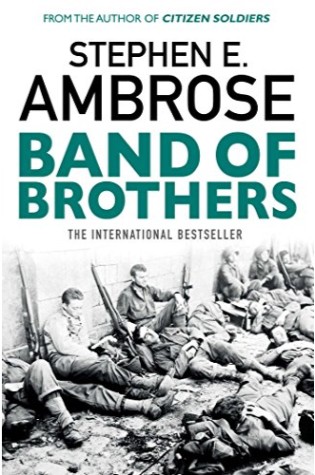
Lists It Appears On:
- About Great Books
- Goodreads
- Wiki.Ezvid
They parachuted into France early D-Day morning and knocked out a battery of four 105 mm cannon looking down Utah Beach; they parachuted into Holland during the Arnhem campaign; they were the Battered Bastards of the Bastion of Bastogne, brought in to hold the line, although surrounded, in the Battle of the Bulge; and then they spearheaded the counteroffensive. Finally, they captured Hitler’s Bavarian outpost, his Eagle’s Nest at Berchtesgaden.
14 .) Ghost Soldiers: The Epic Account of World War II’s Greatest Rescue Mission written by Hampton Sides
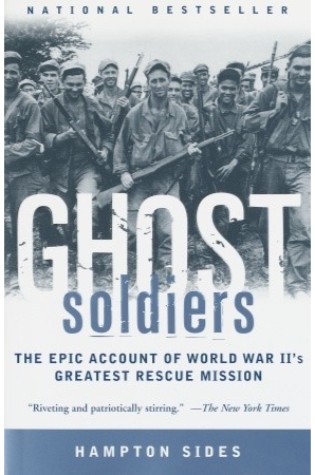
Lists It Appears On:
- Book Riot
- Goodreads
- Wiki.Ezvid
On January 28, 1945, 121 hand-selected U.S. troops slipped behind enemy lines in the Philippines. Their mission: March thirty rugged miles to rescue 513 POWs languishing in a hellish camp, among them the last survivors of the infamous Bataan Death March. A recent prison massacre by Japanese soldiers elsewhere in the Philippines made the stakes impossibly high and left little time to plan the complex operation. In Ghost Soldiers Hampton Sides vividly re-creates this daring raid, offering a minute-by-minute narration that unfolds alongside intimate portraits of the prisoners and their lives in the camp. Sides shows how the POWs banded together to survive, defying the Japanese authorities even as they endured starvation, tropical diseases, and torture. Harrowing, poignant, and inspiring, Ghost Soldiers is the mesmerizing story of a remarkable mission. It is also a testament to the human spirit, an account of enormous bravery and self-sacrifice amid the most trying conditions.
13 .) Goodnight Mister Tom written by Michelle Magorian
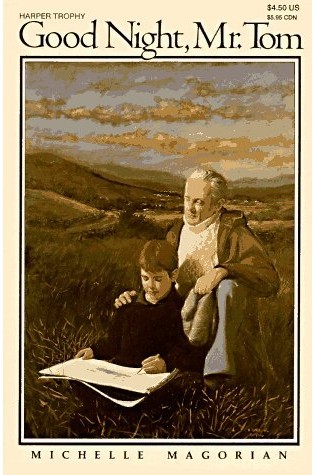
Lists It Appears On:
- Book Riot
- Books For Topics
- The School Run
London is poised on the brink of World War II. Timid, scrawny Willie Beech — the abused child of a single mother — is evacuated to the English countryside. At first, he is terrified of everything, of the country sounds and sights, even of Mr. Tom, the gruff, kindly old man who has taken him in. But gradually Willie forgets the hate and despair of his past. He learns to love a world he never knew existed, a world of friendship and affection in which harsh words and daily beatings have no place. Then a telegram comes. Willie must return to his mother in London. When weeks pass by with no word from Willie, Mr. Tom sets out for London to look for the young boy he has come to love as a son.
12 .) Hiroshima written by John Hersey
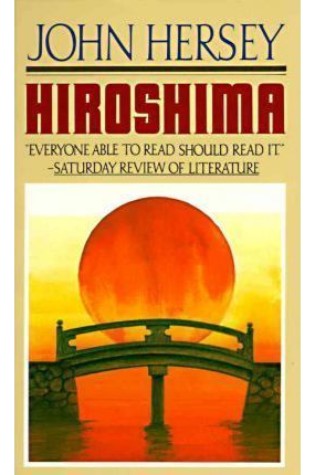
Lists It Appears On:
- Book Riot
- Explore The Archive
- Goodreads
On August 6, 1945, Hiroshima was destroyed by the first atom bomb ever dropped on a city. This book, John Hersey’s journalistic masterpiece, tells what happened on that day. Told through the memories of survivors, this timeless, powerful and compassionate document has become a classic “that stirs the conscience of humanity” (The New York Times). Almost four decades after the original publication of this celebrated book, John Hersey went back to Hiroshima in search of the people whose stories he had told. His account of what he discovered about them is now the eloquent and moving final chapter of Hiroshima .
11 .) In the Garden of Beasts: Love, Terror, and an American Family in Hitler’s Berlin written by Erik Larson
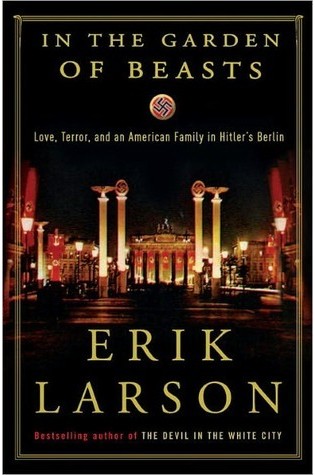
Lists It Appears On:
- Book Riot
- Explore The Archive
- Goodreads
The time is 1933, the place, Berlin, when William E. Dodd becomes America’s first ambassador to Hitler’s Germany in a year that proved to be a turning point in history.A mild-mannered professor from Chicago, Dodd brings along his wife, son, and flamboyant daughter, Martha. At first Martha is entranced by the parties and pomp, and the handsome young men of the Third Reich with their infectious enthusiasm for restoring Germany to a position of world prominence. Enamored of the New Germany, she has one affair after another, including with the surprisingly honorable first chief of the Gestapo, Rudolf Diels. But as evidence of Jewish persecution mounts, confirmed by chilling first-person testimony, her father telegraphs his concerns to a largely indifferent State Department back home. Dodd watches with alarm as Jews are attacked, the press is censored, and drafts of frightening new laws begin to circulate. As that first year unfolds and the shadows deepen, the Dodds experience days full of excitement, intrigue, romance and ultimately, horror, when a climactic spasm of violence and murder reveals Hitler’s true character and ruthless ambition.Suffused with the tense atmosphere of the period, and with unforgettable portraits of the bizarre Goring and the expectedly charming—yet wholly sinister—Goebbels, In the Garden of Beasts lends a stunning, eyewitness perspective on events as they unfold in real time, revealing an era of surprising nuance and complexity. The result is a dazzling, addictively readable work that speaks volumes about why the world did not recognize the grave threat posed by Hitler until Berlin, and Europe, were awash in blood and terror.
10 .) Night (The Night Trilogy, #1) written by Elie Wiesel
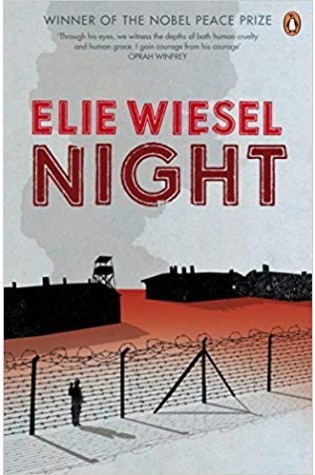
Lists It Appears On:
- Book List Reader
- Book Riot
- Goodreads
Night is Elie Wiesel’s masterpiece, a candid, horrific, and deeply poignant autobiographical account of his survival as a teenager in the Nazi death camps. This new translation by Marion Wiesel, Elie’s wife and frequent translator, presents this seminal memoir in the language and spirit truest to the author’s original intent. And in a substantive new preface, Elie reflects on the enduring importance of Night and his lifelong, passionate dedication to ensuring that the world never forgets man’s capacity for inhumanity to man.
9 .) The Diary of a Young Girl written by Anne Frank
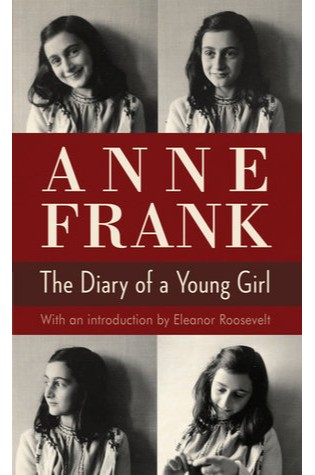
Lists It Appears On:
- Book Riot
- Goodreads
- Intentional Home Schooling
Anne Frank’s extraordinary diary, written in the Amsterdam attic where she and her family hid from the Nazis for two years, has become a world classic and a timeless testament to the human spirit. Now, in a new edition enriched by many passages originally withheld by her father, we meet an Anne more real, more human, and more vital than ever. Here she is first and foremost a teenage girl—stubbornly honest, touchingly vulnerable, in love with life. She imparts her deeply secret world of soul-searching and hungering for affection, rebellious clashes with her mother, romance and newly discovered sexuality, and wry, candid observations of her companions. Facing hunger, fear of discovery and death, and the petty frustrations of such confined quarters, Anne writes with adult wisdom and views beyond her years. Her story is that of every teenager, lived out in conditions few teenagers have ever known.
8 .) The Longest Day written by Cornelius Ryan
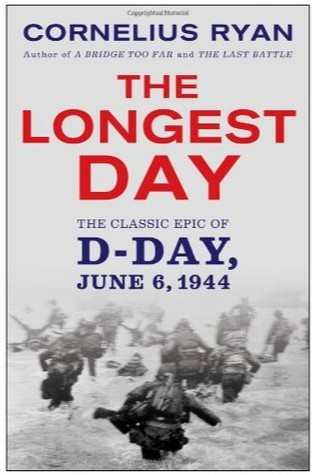
Lists It Appears On:
- About Great Books
- Explore The Archive
- Goodreads
The classic account of the Allied invasion of Normandy. The Longest Day is Cornelius Ryan’s unsurpassed account of D-Day, a book that endures as a masterpiece of military history. In this compelling tale of courage and heroism, glory and tragedy, Ryan painstakingly recreates the fateful hours that preceded and followed the massive invasion of Normandy to retell the story of an epic battle that would turn the tide against world fascism and free Europe from the grip of Nazi Germany. This book, first published in 1959, is a must for anyone who loves history, as well as for anyone who wants to better understand how free nations prevailed at a time when darkness enshrouded the earth.
7 .) The Second World War written by John Keegan
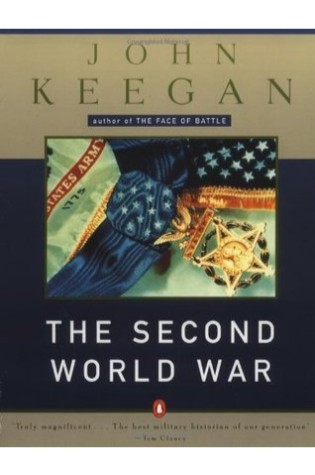
Lists It Appears On:
- About Great Books
- Book Riot
- Goodreads
In this comprehensive history, John Keegan explores both the technical and the human impact of the greatest war of all time. He focuses on five crucial battles and offers new insights into the distinctive methods and motivations of modern warfare. In knowledgable, perceptive analysis of the airborne battle of Crete, the carrier battle of Midway, the tank battle of Falaise, the city battle of Berlin, and the amphibious battle of Okinawa, Keegan illuminates the strategic dilemmas faced by the leaders and the consequences of their decisions on the fighting men and the course of the war as a whole.
6 .) Unbroken: A World War II Story of Survival, Resilience and Redemption written by Laura Hillenbrand
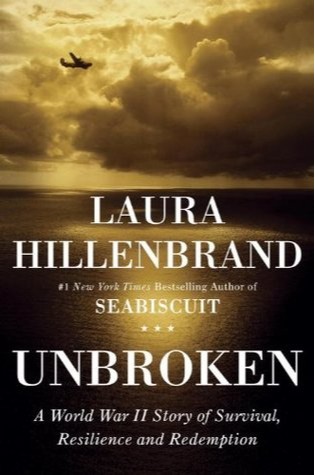
Lists It Appears On:
- About Great Books
- Book Riot
- Goodreads
In her long-awaited new book, Laura Hillenbrand writes with the same rich and vivid narrative voice she displayed in Seabiscuit. Telling an unforgettable story of a man’s journey into extremity, Unbroken is a testament to the resilience of the human mind, body, and spirit. On a May afternoon in 1943, an Army Air Forces bomber crashed into the Pacific Ocean and disappeared, leaving only a spray of debris and a slick of oil, gasoline, and blood. Then, on the ocean surface, a face appeared. It was that of a young lieutenant, the plane’s bombardier, who was struggling to a life raft and pulling himself aboard. So began one of the most extraordinary odysseys of the Second World War.The lieutenant’s name was Louis Zamperini. In boyhood, he’d been a cunning and incorrigible delinquent, breaking into houses, brawling, and fleeing his home to ride the rails. As a teenager, he had channeled his defiance into running, discovering a prodigious talent that had carried him to the Berlin Olympics and within sight of the four-minute mile. But when war had come, the athlete had become an airman, embarking on a journey that led to his doomed flight, a tiny raft, and a drift into the unknown.Ahead of Zamperini lay thousands of miles of open ocean, leaping sharks, a foundering raft, thirst and starvation, enemy aircraft, and, beyond, a trial even greater. Driven to the limits of endurance, Zamperini would answer desperation with ingenuity; suffering with hope, resolve, and humor; brutality with rebellion. His fate, whether triumph or tragedy, would be suspended on the fraying wire of his will.
5 .) A Woman in Berlin: Eight Weeks in the Conquered City: A Diary written by Marta Hillers
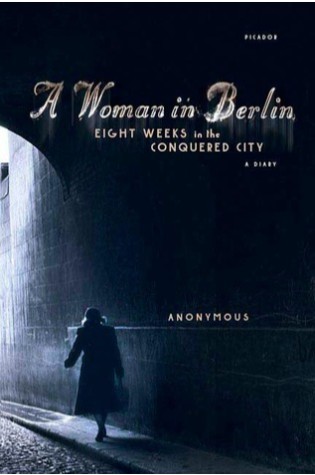
Lists It Appears On:
- About Great Books
- Book Riot
- Five Books
- Goodreads
A New York Times Book Review Editors’ Choice For eight weeks in 1945, as Berlin fell to the Russian army, a young woman kept a daily record of life in her apartment building and among its residents. The anonymous author depicts her fellow Berliners in all their humanity, as well as their cravenness, corrupted first by hunger and then by the Russians. A Woman in Berlin tells of the complex relationship between civilians and an occupying army and the shameful indignities to which women in a conquered city are always subject–the mass rape suffered by all, regardless of age or infirmity.
4 .) The Hiding Place: The Triumphant True Story of Corrie Ten Boom written by Corrie Ten Boom, John Sherrill, and Elizabeth Sherrill

Lists It Appears On:
- About Great Books
- Book List Reader
- Book Riot
- Goodreads
At one time Corrie ten Boom would have laughed at the idea that there would ever be a story to tell. For the first fifty years of her life nothing at all out of the ordinary had ever happened to her. She was an old-maid watchmaker living contentedly with her spinster sister and their elderly father in the tiny Dutch house over their shop. Their uneventful days, as regulated as their own watches, revolved around their abiding love for one another. However, with the Nazi invasion and occupation of Holland, a story did ensue. Corrie ten Boom and her family became leaders in the Dutch Underground, hiding Jewish people in their home in a specially built room and aiding their escape from the Nazis. For their help, all but Corrie found death in a concentration camp. The Hiding Place is their story.
3 .) The Zookeeper’s Wife written by Diane Ackerman
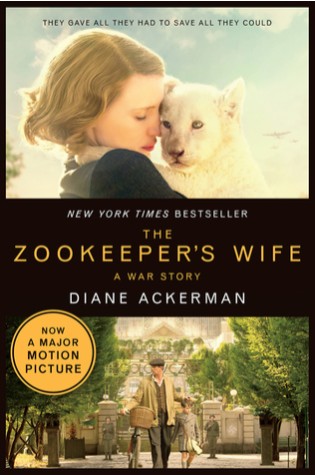
Lists It Appears On:
- About Great Books
- Book List Reader
- Book Riot
- Goodreads
When Germany invaded Poland, Stuka bombers devastated Warsaw—and the city’s zoo along with it. With most of their animals dead, zookeepers Jan and Antonina Zabinski began smuggling Jews into empty cages. Another dozen “guests” hid inside the Zabinskis’ villa, emerging after dark for dinner, socializing, and, during rare moments of calm, piano concerts. Jan, active in the Polish resistance, kept ammunition buried in the elephant enclosure and stashed explosives in the animal hospital. Meanwhile, Antonina kept her unusual household afloat, caring for both its human and its animal inhabitants—otters, a badger, hyena pups, lynxes.With her exuberant prose and exquisite sensitivity to the natural world, Diane Ackerman engages us viscerally in the lives of the zoo animals, their keepers, and their hidden visitors. She shows us how Antonina refused to give in to the penetrating fear of discovery, keeping alive an atmosphere of play and innocence even as Europe crumbled around her.
2 .) The Rise and Fall of the Third Reich: A History of Nazi Germany written by William L. Shirer
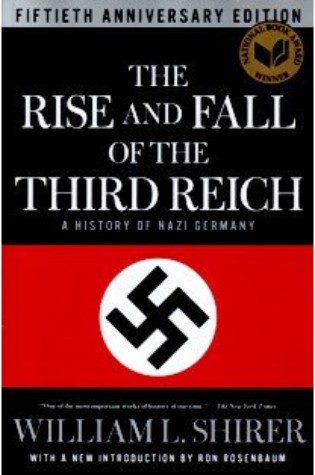
Lists It Appears On:
- Book Riot
- Explore The Archive
- Goodreads
- Wiki.Ezvid
Hitler boasted that The Third Reich would last a thousand years. It lasted only 12. But those 12 years contained some of the most catastrophic events Western civilization has ever known.No other powerful empire ever bequeathed such mountains of evidence about its birth and destruction as the Third Reich. When the bitter war was over, and before the Nazis could destroy their files, the Allied demand for unconditional surrender produced an almost hour-by-hour record of the nightmare empire built by Adolph Hitler. This record included the testimony of Nazi leaders and of concentration camp inmates, the diaries of officials, transcripts of secret conferences, army orders, private letters—all the vast paperwork behind Hitler’s drive to conquer the world.The famed foreign correspondent and historian William L. Shirer, who had watched and reported on the Nazis since 1925, spent five and a half years sifting through this massive documentation. The result is a monumental study that has been widely acclaimed as the definitive record of one of the most frightening chapters in the history of mankind.This worldwide bestseller has been acclaimed as the definitive book on Nazi Germany; it is a classic work.The accounts of how the United States got involved and how Hitler used Mussolini and Japan are astonishing, and the coverage of the war-from Germany’s early successes to her eventual defeat-is must reading
1 .) With the Old Breed: At Peleliu and Okinawa written by Eugene B. Sledge
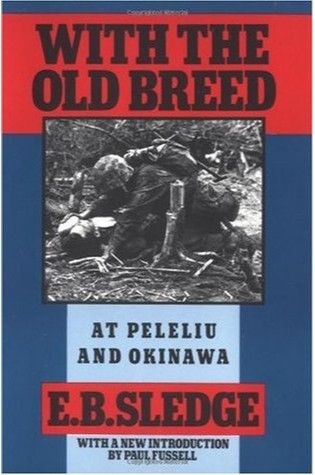
Lists It Appears On:
- About Great Books
- Explore The Archive
- Goodreads
- Pouted
- The Week
In his own book, Wartime, Paul Fussell called With the Old Breed “one of the finest memoirs to emerge from any war.” John Keegan referred to it in The Second World War as “one of the most arresting documents in war literature.” And Studs Terkel was so fascinated with the story he interviewed its author for his book, “The Good War.” What has made E.B. Sledge’s memoir of his experience fighting in the South Pacific during World War II so devastatingly powerful is its sheer honest simplicity and compassion. Now including a new introduction by Paul Fussell, With the Old Breed presents a stirring, personal account of the vitality and bravery of the Marines in the battles at Peleliu and Okinawa. Born in Mobile, Alabama in 1923 and raised on riding, hunting, fishing, and a respect for history and legendary heroes such as George Washington and Daniel Boone, Eugene Bondurant Sledge (later called “Sledgehammer” by his Marine Corps buddies) joined the Marines the year after the bombing of Pearl Harbor and from 1943 to 1946 endured the events recorded in this book. In those years, he passed, often painfully, from innocence to experience. Sledge enlisted out of patriotism, idealism, and youthful courage, but once he landed on the beach at Peleliu, it was purely a struggle for survival. Based on the notes he kept on slips of paper tucked secretly away in his New Testament, he simply and directly recalls those long months, mincing no words and sparing no pain. The reality of battle meant unbearable heat, deafening gunfire, unimaginable brutality and cruelty, the stench of death, and, above all, constant fear. Sledge still has nightmares about “the bloody, muddy month of May on Okinawa.” But, as he also tellingly reveals, the bonds of friendship formed then will never be severed. Sledge’s honesty and compassion for the other marines, even complete strangers, sets him apart as a memoirist of war. Read as sobering history or as high adventure, With the Old Breed is a moving chronicle of action and courage.
The 200+ Additional Best Books About Or Featuring World War Two
| # | Books | Author | Lists |
| 54 | A Boy in Winter | Rachel Seiffert | Book Bob |
| 55 | A Bridge Too Far | Cornelius Ryan | Goodreads |
| 56 | A Dawn Like Thunder: The True Story of Torpedo Squadron Eight | Robert J. Mrazek | Goodreads |
| 57 | A Life in Secrets: Vera Atkins and the Missing Agents of WWII | Sarah Helm | Book Riot |
| 58 | A Long, Long Time Ago and Essentially True | Brigid Pasulka | Book Riot |
| 59 | A Midnight Clear | William Wharton | Book Riot |
| 60 | A Pledge of Silence | Flora J. Solomon | Book Riot |
| 61 | A Separate Peace | John Knowles | Book Riot |
| 62 | A Thread of Grace | Mary Doria Russell | Book Riot |
| 63 | A World at Arms: A Global History of World War II | Gerhard L. Weinberg | Goodreads |
| 64 | Agent Zigzag: A True Story of Nazi Espionage, Love, and Betrayal | Ben Macintyre | Goodreads |
| 65 | All But My Life: A Memoir | Gerda Weissmann Klein | Book Riot |
| 66 | All Hell Let Loose: The World at War 1939-45 | Max Hastings | About Great Books |
| 67 | All the Light We cannot See | Anthony Doerr | Book Riot |
| 68 | Americans In Paris: Life and Death Under Nazi Occupation 1940-1944 | Charles Glass | Book Riot |
| 69 | Anne Frank Remembered: The Story of the Woman Who Helped to Hide the Frank Family | Miep Gies | Goodreads |
| 70 | Annexed | Intentional Home Schooling | |
| 71 | Architects of Death: The Family Who Engineered the Death Camps | WW2 Reads | |
| 72 | Armageddon: The Battle for Germany, 1944-1945 | Max Hastings | Goodreads |
| 73 | Atonement | Ian McEwan | Book Riot |
| 74 | Back Home | Michelle Magorian | The School Run |
| 75 | Berlin Diaries, 1940-1945 | Marie Vassiltchikov | About Great Books |
| 76 | Berlin Diary: The Journal of a Foreign Correspondent 1934-1941 | William L. Shirer | Goodreads |
| 77 | Between Shades of Gray | Ruta Sepetys | Book Riot |
| 78 | Between Silk and Cyanide: A Codemaker’s War, 1941-1945 | Leo Marks | Goodreads |
| 79 | Beyond Band of Brothers: The War Memoirs of Major Dick Winters | Dick Winters | Goodreads |
| 80 | Black Hawk Down: A Story of Modern War | Mark Bowden | Goodreads |
| 81 | Blackout | Connie Willis | Book Riot |
| 82 | Blitzed: Drugs in the Third Reich | Norman Ohler | Goodreads |
| 83 | Blood in Zion: How the Jewish Guerrillas Drove the British Out of Palestine | Saul Zadka | Goodreads |
| 84 | Bloodlands | Timothy Snyder | Five Books |
| 85 | Boy 30529: A Memoir | Felix WEinberg | Book Riot |
| 86 | Brothers in Arms: The Epic Story of the 761st Tank Battalion, WWII’s Forgotten Heroes | Kareem Abdul-Jabbar and Anthony Walton | Book Riot |
| 87 | Carrier Pilot | Norman Hanson | About Great Books |
| 88 | China Dolls | Lisa See | Book Riot |
| 89 | Churchill, Hitler and “The Unnecessary War”: How Britain Lost Its Empire and the West Lost the World | Patrick J. Buchanan | Goodreads |
| 90 | Churchill’s Secret War: The British Empire and the Ravaging of India During World War II | Madhusree Mukerjee | Book Riot |
| 91 | Churchill’s Spy Files: MI5’s Top-Secret Wartime Reports | WW2 Reads | |
| 92 | Citadel: The Battle of Kursk | Robin Cross | Goodreads |
| 93 | Citizen Soldiers: The US Army from the Normandy Beaches to the Bulge to the Surrender of Germany | Stephen E. Ambrose | Goodreads |
| 94 | Code Name Verity | Elizabeth Wein | Book Riot |
| 95 | Code TAlker: A Novel About the navajo Marines of World War II | Joseph Bruchac | Book Riot |
| 96 | Codename Celine | Jim Eldridge | The School Run |
| 97 | Company Commander: The Classic Infantry Memoir of World War II | Charles B. MacDonald | Goodreads |
| 98 | Corrie Ten Boom: Keeper of the Angels’ Den | Intentional Home Schooling | |
| 99 | Crabwalk | Günter Grass | Goodreads |
| 100 | D DAY Through German Eyes | Holger Eckhertz | About Great Books |
| 101 | D-Day, June 6, 1944: The Battle for the Normandy Beaches | Stephen E. Ambrose | Goodreads |
| 102 | Das Boot | Lothar-Günther Buchheim | Book Riot |
| 103 | David Long & Peter Bailey | Books For Topics | |
| 104 | Decision in Normandy | Carlo D’Este | Goodreads |
| 105 | Dirty Little Secrets of World War II: Military Information No One Told You about the Greatest, Most Terrible War in History | James F. Dunnigan and Albert A. Nofi | Book Riot |
| 106 | Double Cross: The True Story of the D-Day Spies | Ben Macintyre | Goodreads |
| 107 | Dust of Eden | Mariko Nagai | Book Riot |
| 108 | Eagle Against the Sun: the American War with Japan | Pouted | |
| 109 | Echo | Intentional Home Schooling | |
| 110 | Edith’s War: Writings of a Red Cross Worker and Lifelong Champion of Social Justice | Peter A. Witt | WW2 Reads |
| 111 | Enemy at the Gates: The Battle for Stalingrad | William Craig | Goodreads |
| 112 | Escape from Davao: The Forgotten Story of the Most Daring Prison Break of the Pacific War | John D. Lukacs | Goodreads |
| 113 | Escape from the Deep: The Epic Story of a Legendary Submarine and her Courageous Crew | Alex Kershaw | Goodreads |
| 114 | Escape From Warsaw | Intentional Home Schooling | |
| 115 | Eyewitness to World War II | Wiki.Ezvid | |
| 116 | Fighting for America: Black Soldiers—the Unsung Heroes of World War II | Christopher Moore | Book Riot |
| 117 | Five Days That Shocked the World: Eyewitness Accounts from Europe at the End of World War II | Nicholas Best | Goodreads |
| 118 | Flags of Our Fathers | James D. Bradley | Goodreads |
| 119 | Flights of Passage | The Week | |
| 120 | Flygirl | Sherri L. Smith | Book Riot |
| 121 | Fortress Malta: An Island Under Siege 1940-43 | James Holland | Goodreads |
| 122 | Gone to Soldiers | Marge Piercy | Book Riot |
| 123 | Guadalcanal: The Definitive Account of the Landmark Battle | Pouted | |
| 124 | Half Blood Blues | esi edugyan | Book Riot |
| 125 | Harlem at War: The Black Experience in World War II | Nathan Brandt | Book Riot |
| 126 | Hiroshima Diary: The Journal of a Japanese Physician, August 6–September 30, 1945 | Michihiko Hachiya | Book Riot |
| 127 | Hitler: A Study in Tyranny | Alan Bullock | About Great Books |
| 128 | Hitler’s American Friends: The Third Reich’s Supporters in the United States | WW2 Reads | |
| 129 | Hitler’s Daughter | Intentional Home Schooling | |
| 130 | Honoring Sergeant Carter: A FAmily’s Journey to Uncover the Truth About an American hero | Allene G. Carter and Robert L. Allen | Book Riot |
| 131 | Human Smoke: The Beginnings of World War II, the End of Civilization | Explore The Archive | |
| 132 | Hunting Eichmann: How a Band of Survivors and a Young Spy Agency Chased Down the World’s Most Notorious Nazi | Neal Bascomb | Goodreads |
| 133 | I am David | Anne Holm | Books For Topics |
| 134 | I Survived: The Nazi Invasion, 1944 | Intentional Home Schooling | |
| 135 | In Broad Daylight: The Secret Procedures Behind the Holocaust | Bullets, Based on New Research and First-Hand Accounts | WW2 Reads |
| 136 | In Harm’s Way: The Sinking of the USS Indianapolis and the Extraordinary Story of Its Survivors | Doug Stanton | Goodreads |
| 137 | In My Hands: Memories of a Holocaust Rescuer | Irene Gut Opdyke and Jennifer Armstrong | Book Riot |
| 138 | Inferno: The World at War, 1939-1945 | Max Hastings | Goodreads |
| 139 | Jabob’s Rescue | Intentional Home Schooling | |
| 140 | Jackdaws | Ken Follett | Book Riot |
| 141 | JD Salinger & The Nazis | WW2 Reads | |
| 142 | Jet the Rescue Dog | David Long & Peter Bailey | Books For Topics |
| 143 | Journey to Topaz: A Story of the Japanese-American Evacuation | Yoshiko Uchida | Book Riot |
| 144 | Killing Hitler: The Third Reich and the Plots Against the Fuhrer | Roger Moorhouse | Goodreads |
| 145 | Laura Hillenbrand’s Unbroken | Wiki.Ezvid | |
| 146 | Letters from Iwo Jima: The Japanese Eyewitness Stories That Inspired Clint Eastwood’s Film | Kumiko Kakehashi | Goodreads |
| 147 | Lost in Shangri-la: A True Story of Survival, Adventure, and the Most Incredible Rescue Mission of World War II | Mitchell Zuckoff | Goodreads |
| 148 | Mare’s War | Tanita S. Davis | Book Riot |
| 149 | Medaliony | Zofia Nałkowska | Goodreads |
| 150 | Memoirs of the Second World War | Winston S. Churchill | About Great Books |
| 151 | My Secret Diary | The School Run | |
| 152 | My Secret War Diary, by Flossie Albright | Marcia Williams | Books For Topics |
| 153 | Nagasaki: Life After Nuclear War | Susan Southard | Book Riot |
| 154 | Nisei Daughter | MOnica Itoi Sone | Book Riot |
| 155 | Notes of a Sniper | Vasili Zaitsev | Goodreads |
| 156 | Once | Morris Gleitzman | The School Run |
| 157 | Once An Eagle | Pouted | |
| 158 | One Man’s Justice | Akira Yoshimura | Goodreads |
| 159 | Onward Towards our Noble Deaths | Shigeru Mizuki | Book Riot |
| 160 | Operation Mincemeat: How a Dead Man and a Bizarre Plan Fooled the Nazis and Assured an Allied Victory | Ben Macintyre | Goodreads |
| 161 | Our Castle by the Sea | Lucy Strange | Books For Topics |
| 162 | Pacific Crucible: War at Sea in the Pacific, 1941-1942 | Ian W. Toll | Goodreads |
| 163 | Paths of Armor: The Fifth Armored Division in World War II | Vic Hillery | About Great Books |
| 164 | Patton: A Genius for War | Carlo D’Este | Goodreads |
| 165 | Pegasus Bridge | Stephen E. Ambrose | Goodreads |
| 166 | Persian Gulf Command: A History of the Second World War in Iran and Iraq | WW2 Reads | |
| 167 | Rampage: MacArthur, Yamashita and the Battle of Manila | WW2 Reads | |
| 168 | Ravensbruck: Life and Death in Hitler’s Concentration Camp for Women, | Book List Reader | |
| 169 | Red Tail Captured, Red Tail Free: Memoirs of a Tuskegee Airman and POW | Alexander Jefferson and Lewis Carlson | Book Riot |
| 170 | Rescue Board: The Untold Story of America’s Efforts to Save the Jews of Europe | Rebecca Erbelding | WW2 Reads |
| 171 | Retribution: The Battle for Japan, 1944-45 | Max Hastings | Goodreads |
| 172 | Rose Blanche | Ian McEwan | The School Run |
| 173 | Sarah’s Key, | Book List Reader | |
| 174 | SECOND WORLD WAR INFANTRY TACTICS: The European Theatre | Stephen Bull | About Great Books |
| 175 | Slaughterhouse-Five | Kurt Vonnegut | Book Riot |
| 176 | Small Island | Andrea Levy | Book Riot |
| 177 | SOE Heroines: The Special Operations Executive’s French Section & Free French Women Agents | WW2 Reads | |
| 178 | Someone Named Eva | Joan M. Wolf | Book Riot |
| 179 | Spy Princess: The life of Noor Inayat Khan | Shrabani Basu | Book Riot |
| 180 | Still Alive: A Holocaust Girlhood Remembered, | Book List Reader | |
| 181 | Stilwell and the American Experience in China | Pouted | |
| 182 | Stones from the River | Ursula Hegi | Book Riot |
| 183 | Storm of Steel | Ernst Jünger | Goodreads |
| 184 | Strong Men Armed: The United States Marines Against Japan | Pouted | |
| 185 | Tail-End Charlie | Mick Manning | Books For Topics |
| 186 | The Alice Network | Kate Quinn | Book Bob |
| 187 | The Amber Shadows | Lucy Ribchester | Book Bob |
| 188 | The Arsenal of Democracy: FDR, Detroit, and an Epic Quest to Arm an America at War | A.J. Baime | Goodreads |
| 189 | The Bedford Boys: One American Town’s Ultimate D-Day Sacrifice | Alex Kershaw | Goodreads |
| 190 | The Boat Runner | Devin Murphy | Book Bob |
| 191 | The Boys in the Boat: Nine Americans and Their Epic Quest for Gold at the 1936 Berlin Olympics | Daniel James Brown | Goodreads |
| 192 | The Boys’ Crusade | The Week | |
| 193 | The Buried Crown | Ally Sherrick | Books For Topics |
| 194 | The Caine Mutiny | Herman Wouk | Book Riot |
| 195 | The Chosen | Chaim Potok | Book Riot |
| 196 | The Cinderella Campaign: First Canadian Army and the Battles for the Channel Ports | Mark Zuehlke | WW2 Reads |
| 197 | The City of Thieves | David Benioff | Book Riot |
| 198 | The Day of Battle: The War in Sicily and Italy, 1943-1944 (World War II Liberation Trilogy, #2) | Rick Atkinson | Goodreads |
| 199 | The Devil’s Arithmetic | Intentional Home Schooling | |
| 200 | The Diplomat’s Daughter | Karin Tanabe | Book Bob |
| 201 | The Dress in the Window | Sofia Grant | Book Bob |
| 202 | The Enemy at the Gates | William Craig | About Great Books |
| 203 | The English Patient | Michael Ondaatje | Book Riot |
| 204 | The Escape Line: How the Ordinary Heroes of Dutch-Paris Resisted the Nazi Occupation of Western Europe | WW2 Reads | |
| 205 | The Final Race: The Incredible World War II Story of the Olympian Who Inspired Chariots of Fire | WW2 Reads | |
| 206 | The Flying Tigers: The Untold Story of the American Pilots Who Waged a Secret War Against Japan | Sam Kleiner | WW2 Reads |
| 207 | The Forgotten 500: The Untold Story of the Men Who Risked All For the Greatest Rescue Mission of World War II | Gregory A. Freeman | Goodreads |
| 208 | The Forgotten Soldier | Guy Sajer | Goodreads |
| 209 | The Gallery | John Horne Burns | Book Riot |
| 210 | The German Way of War: From the Thirty Years’ War to the Third Reich | Robert M. Citino | Goodreads |
| 211 | The Girl from Krakow, | Book List Reader | |
| 212 | The Girl in the Blue Beret, | Book List Reader | |
| 213 | The Good Man of Nanking: The Diaries of John Rabe | John Rabe | Goodreads |
| 214 | The Great Fortune | Olivia Manning | Book Riot |
| 215 | The Greatest Generation | Tom Brokaw | About Great Books |
| 216 | The Guernsey Literary and Potato Peel Pie Society | Mary Ann Schaffer and Annie Barrows | Book Riot |
| 217 | The Guns at Last Light: The War in Western Europe, 1944-1945 (World War II Liberation Trilogy, #3) | Rick Atkinson | Goodreads |
| 218 | The Guns of August | Barbara W. Tuchman | Goodreads |
| 219 | The Guns of Navarone | Alistair MacLean | Book Riot |
| 220 | The House of Dreams, | Book List Reader | |
| 221 | The Hut Six Story: Breaking the Enigma Codes | Norman Hanson | About Great Books |
| 222 | The Investigation | J.M. Lee | Book Riot |
| 223 | The Invisible Bridge | Julie Orringer | Book Riot |
| 224 | The Kindly Ones | Jonathan Littell | Book Riot |
| 225 | The Last Battle: The Classic History of the Battle for Berlin | Cornelius Ryan | Goodreads |
| 226 | The Last Stand of the Tin Can Sailors: The Extraordinary World War II Story of the U.S. Navy’s Finest Hour | James D. Hornfischer | Goodreads |
| 227 | The Lost Letter | Jillian Cantor | Book Bob |
| 228 | The Monuments Men: Allied Heroes, Nazi Thieves, and the Greatest Treasure Hunt in History | Robert M. Edsel | Book Riot |
| 229 | The Most Dangerous Enemy: A History of the Battle of Britain | Stephen Bungay | About Great Books |
| 230 | The Night Watch | Sarah Waters | Book Riot |
| 231 | The Nightingale, | Book List Reader | |
| 232 | The Periodic Table | Primo Levi | Book Riot |
| 233 | The Postmistress | Sarah Blake | Book Riot |
| 234 | The Railway Man: A POW’s Searing Account of War, Brutality and Forgiveness | Eric Lomax | Goodreads |
| 235 | The Second World War | Winston S. Churchill | Book Riot |
| 236 | The Second World War | Antony Beevor | Goodreads |
| 237 | The Second World War (Usborne True Stories) – paperback | Paul Dowswell | About Great Books |
| 238 | The Second World War: A Complete History | Martin Gilbert | Goodreads |
| 239 | The Seventh Cross | Anna SEghers | Book Riot |
| 240 | The Shawl | Cynthia Ozick | Book Riot |
| 241 | The Soldiers’ Tale | The Week | |
| 242 | The Stone Crusher: The True Story of a Father and Son’s Fight for Survival in Auschwitz | WW2 Reads | |
| 243 | The Story of World War II | The Week | |
| 244 | The Sword of Honour Trilogy | Evelyn Waugh | Book Riot |
| 245 | The Tango War: The Struggle for the Hearts, Minds and Riches of Latin America During World War II | WW2 Reads | |
| 246 | The Third Reich at War (The History of the Third Reich, #3) | Richard J. Evans | Goodreads |
| 247 | The Tin Drum | Günter Grass | Book Riot |
| 248 | The Train to Crystal City: FDR’s Secret Prisoner Exchange Program and America’s Only Family Internment Camp During World War II | Jan Jarboe Russell | Goodreads |
| 249 | The War that Saved My Life | Intentional Home Schooling | |
| 250 | The Washington War: FDR’s Inner Circle and the Politics of Power That Won World War II | WW2 Reads | |
| 251 | The Watcher | Intentional Home Schooling | |
| 252 | The Way to London | Alix Rickloff | Book Bob |
| 253 | The Welsh Girl | Peter Ho Davies | Book Riot |
| 254 | The Wolves at the Door: The True Story of America’s Greatest Female Spy | Judith L. Pearson | Book Riot |
| 255 | Those Who Save Us | Jenna Blum | Book Riot |
| 256 | To Die in Spring | Ralf Rothmann | Book Bob |
| 257 | To Serve My Country, to Serve My Race: The Story of the Only African-American WACs Stationed Overseas During World War II | Brenda L. Moore | Book Riot |
| 258 | Truth: Red, White, and Black | Robert Morales and Kyle Baker | Book Riot |
| 259 | Tuskegee Airman: The Biography of Charles E. McGee: Air Force Fighter Combat Record Holder | Charlene E. McGee Smith | Book Riot |
| 260 | Under An English Heaven | Robert Radcliffe | Goodreads |
| 261 | Up Front | Bill Mauldin | Goodreads |
| 262 | Utmost Savagery: The Three Days of Tarawa | Pouted | |
| 263 | War and Remembrance | Pouted | |
| 264 | Wartime | The Week | |
| 265 | Wave Me Goodbye | Jacqueline Wilson | The School Run |
| 266 | Wave of Terror | Theodore Odrach | Goodreads |
| 267 | We Band of Angels: The Untold Story of American Nurses Trapped on Bataan by the Japanese | Elizabeth M. Norman | Goodreads |
| 268 | When Books Went to War: The Stories that Helped Us Win World War II | Molly Guptill Manning | Goodreads |
| 269 | When the Emperor was divine | Julie Otsuka | Book Riot |
| 270 | Why the Allies Won | Richard Overy | Goodreads |
| 271 | Winston’s War: Churchill, 1940-1945 | Max hastings | Book Riot |
| 272 | Wives of War | Soraya M. Lane | Book Bob |
| 273 | Woeful Second World War | Terry Deary | Books For Topics |
| 274 | World War II at Sea: A Global History | WW2 Reads | |
| 275 | World War II in 500 Photographs | Wiki.Ezvid | |
| 276 | You Can Fly: The Tuskegee Airmen | Carole Boston Weatherford and Jeffery Boston Weatherford | Book Riot |
| 277 | Young Hitler: The Making of the Fuhrer | WW2 Reads |
14 Best Fiction & Nonfiction WW2 Book Sources/Lists
| Source | Article |
| About Great Books | Top 30 Books About World War II |
| Book Bob | 10 of the Best WWII Historical Fiction Books: Summer 2017 |
| Book List Reader | For Fans of Lilac Girls, 15 More Unforgettable WWII Reads |
| Book Riot | 100 Must-Read World War II Books |
| Books For Topics | Book Lists for World War II |
| Explore The Archive | 9 Best World War II Books That Examine Every Angle of the Conflict |
| Five Books | The Best Books on World War II |
| Goodreads | Best World War II History |
| Intentional Home Schooling | 16 Gripping World War II Books for the Middle Years |
| Pouted | Top 10 Most Famous Books About World War II |
| The School Run | Best children’s books about WWII |
| The Week | Ken Burns’ 6 favorite books about World War II |
| Wiki.Ezvid | Top 10 WWII Books of 2018 |
| WW2 Reads | Top 20 Must Read WWII Books of 2018 |
